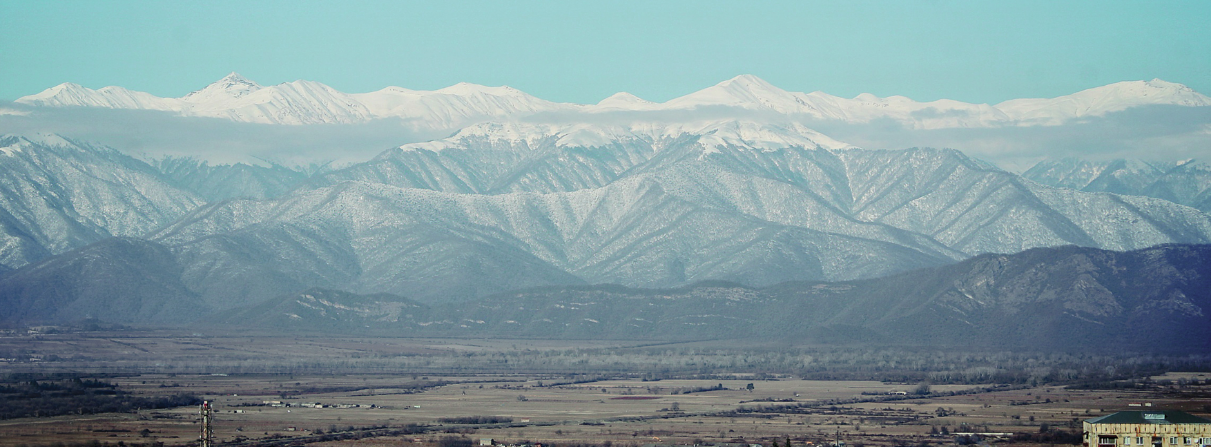
Georgia is a small country that lies amid Western Asia and Eastern Europe. Sandwiched between the Caucasus Mountains and the Russian Federation to the North, the Black Sea to the West and Turkey, Azerbaijan and Armenia to the South. Georgia is located on this cultural and geographical crossroad. The palaeolithic fragments of the oldest known European ancestors were discovered in the village of Dmanisi, Georgia. The Archaeologists have found that these human remains were nearly 1.8 million years old. Some excavations in the Satsurblia Caves have shown groups living before and after the last Ice Age (25,000 and 17,000 BCE). A bit of DNA was recovered from one of those skulls that revealed the person was male, and one of the first discovered people to have had light skin and blue eyes.
The roots of the Georgian people extend deep in history. Assyrians, Hittites, Sumerians, Romans, Arabs, Persians, Byzantines, Turks, Mongolians, Russians - this is the shortlist of invaders that tried to conquest Georgia throughout its long, diverse, remarkable and blood-soaked history.
Georgian cultural heritage is equally ancient and vibrant, which is justified by its exceptional geographical location. On the one hand, it is at the crossroads of Europe and Asia. At the same time, Georgia occupies a central place in the Caucasus between the Black and Caspian Seas, where it has always played a significant role.
Georgians have created a unique alphabet, which is one of the 14 original scripts, known to date throughout the world. Georgian texts are unique in their appearance, and their exact origin has never been established. They were granted the national status of intangible cultural heritage in Georgia in 2015 and inscribed on the UNESCO representative list of the Intangible Cultural Heritage of Humanity in 2016.
In their native tongue, Georgians call themselves Kartveli and Georgia Sakartvelo.
One of the many origin stories of why the area was named Georgia (as opposed to the native Sakartvelo) is that the Greeks found the natives working diligently on the lands lush, fertile soil calling them "tiller of the land." (how does this relate to the word georgia?)Scholars treat this story more like a legend and are more convinced that it came from the Persian name for the areas near the Caspian Sea known as Gorgan, "land of the wolves."
The legendary Kingdom of Kolchis, where the story of Jason and the Argonauts takes place, was located on the territory of Georgia. Although The Kingdom of Kolchis was a real place although it is referenced as one of the central action areas of several myths and tales. This first nation-state on a Georgian alongside Kingdom of Diauehi land was formed in XIII century B.C. Kolhis no longer exists. However, its capital is the second biggest city in modern Georgia. don’t understand the above sentences in black
The zenith of Georgian culture and statehood occurred during the period between the XI and XII centuries. It was when Georgian art, architecture, and literature reached their highest recognition. In Georgian history, this is referred to as the Golden Era.
Despite the political disintegration and partial loss of independence in the XIII-XVIII centuries, Georgian culture remains unique and special for its rich tradition and revival of regional centres, which in different ways are reflected in all the historical parts of Georgia.
From 1801 to 1991, despite the first conquest of Georgia by the Russian Empire and then the Soviet regime, Georgian culture continued to preserve its traditions and protected themselves from extinction. In 1991, Georgia regained its independence and created a path of economic development, which led to its reconstruction incorporating and to the establishment of a European tradition culture.